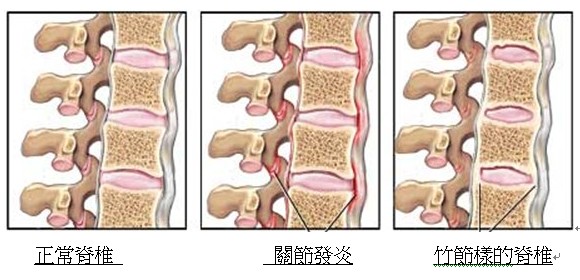

How to deal with ankylosing spondylitis?
Case Sharing
Miss Ma, 41, started to notice repeated back pain when she was 22 years old. At first she thought it was muscle aches. Every time she took a meal, the pain was relieved and the anti-inflammatory drugs would get better. However, the condition was repeated over and over again, with back pain, low back pain, and foot pain gradually appearing, especially in the morning, the whole body would be stiff and it was difficult to move.
She was referred to the rheumatology department and was diagnosed with ankylosing spondylitis. Over the past 20 years, she have been relying on painkillers and anti-inflammatory drugs every day, but they have not prevented the progression of the disease. However, the spine cannot be bent and the hip joints have also deteriorated so severely that it is difficult to walk. The cervical spine cannot rotate and the back has pain.
I started to treat Ms. Ma in 2004. So far, she no longer needs to rely on drugs to relieve her pain every day. In addition to helping relieve joint pain, the treatment can also prevent the rapid deterioration of her condition. Allow patients to live their daily lives easily.
What is Ankylosing Spondylitis?
Ankylosing Spondylitis (AS),
Is the inflammation of joints and tendons, usually occurs in adults aged 20-40. The ratio of male to female is about 5-10 to 1. The unexplained inflammation between the joints affects the joint capsule attached to the tendons, and after long-term inflammation and damage, the joints will become ossified and the joints will gradually become stiff. Excessive wear of the vertebrae degenerates the connection between the spine and the intervertebral discs, creating a bamboo-like spine.

Cause of Ankylosing Spondylitis
The cause of ankylosing spondylitis has not yet been fully understood, but it is related to the deficiency of the immune system. Patients’ blood contains high levels of HLA-B27 factor. According to statistics, 95% of patients have HLA-B27 antigen, and about 2-10% will eventually develop ankylosing spondylitis.
Symptoms of Ankylosing Spondylitis
The patient has chronic back pain, feeling stiff in the morning, pain in the iliac sacrum and hip joints. Sometimes there is tenderness in the sternum and ribs, as well as neck pain and neck stiffness. Occasionally, there is inflammation at the junction of tendons, ligaments and bones. In more serious cases, the vertebral body is formed into bamboo-shaped vertebrae due to the adhesion of the spine, which may cause hunchback or nerve compression.
Linden Criteria
1) Inflammatory back pain, onset before the age of 45
2) HLA-B27 positive in the blood and inflammation indicators (CPR and ESR) can be seen to increase in the active phase
3) A family history of ankylosing spondylitis and any of the following:
i) Recurring unexplained chest pain or stiffness
ii) Unilateral uveitis and inflammation of the junction of tendons, ligaments and bones
iii) Sero-negative for other spondyloarthropathy
4) Limited lumbar motion range
5) Limited breast expansion range
6) X-ray mid-range iliosacral osteoarthritis

Treatment
Patients with ankylosing spondylitis require long-term treatment, or even life-long treatment, to relieve pain and preserve the range and function of the spine.
Because the patient’s spine and tendons are very stiff and tight, the spine cannot be moved by the corrective method. However, the Cox decompression can be used to pull the spine with light force while pressing the vertebral segments with hands. This can increase blood circulation in the affected area. It can also relieve the pain of joint tension.
Patient encourage to have spine stretching exercises, yoga and swimming can be added. Be aware of posture, keep in good posture to prevent further deteriorate.
Medicinal Treatment:
1) Use anti-inflammatory analgesics (NSAID) to relieve pain, but the possible side effects are gastrointestinal discomfort, edema, and renal dysfunction.
2) Use biological agents to inhibit the activity of tumor necrosis factor A (TNF-a) in the body, because the main cause of inflammation is the excessive TNF-a factor in the body causing inflammation. This is a treatment for immune diseases of the body, and it is generally recommended to use it early in the disease.
Early diagnosis and treatment can improve the condition. If young people have recurring back pain and morning stiffness, they should immediately see a doctor to find out the cause.

 Book an Appointment
Book an Appointment


